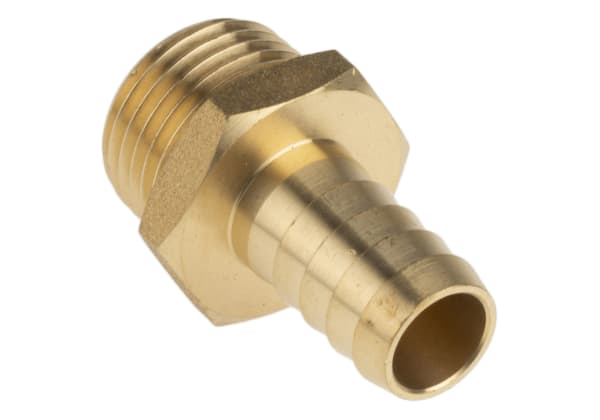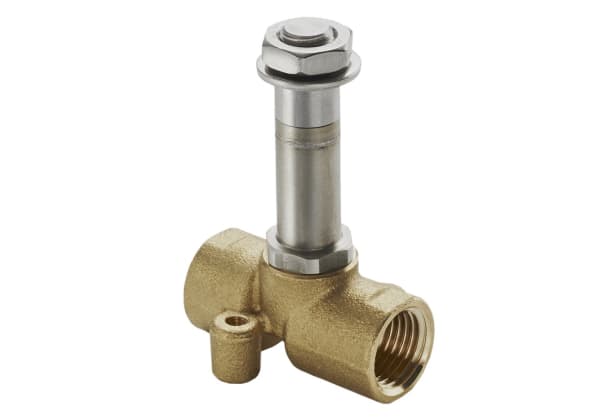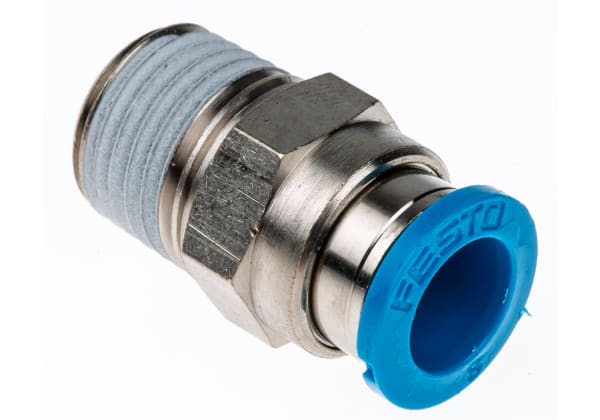- Published 24 Jan 2023
- Last Modified 29 Aug 2023
- 5 min
A Complete Guide to Pressure Relief Valves
What is a pressure relief valve and how does it work? Discover more in our comprehensive guide.

What is a Pressure Relief Valve?
A PRV or pressure relief valve is a safety component which is used in pneumatic or hydraulic systems. These valves are designed to regulate the level of pressure within a system, preventing it from building higher than a pre-defined amount.
Therefore, pressure relief valves are intended to prevent over-pressurisation. This occurs when air pressure (pneumatic) or oil pressure (hydraulic or liquid) surpasses the maximum level allowed for a particular system.
PRVs are designed to open at a pre-set pressure level, discharging fluid from the system until the pressure drops again. Excessively high levels of pressure could potentially cause damage to people or machinery, so relief valves play an important role when it comes to workplace safety and security.
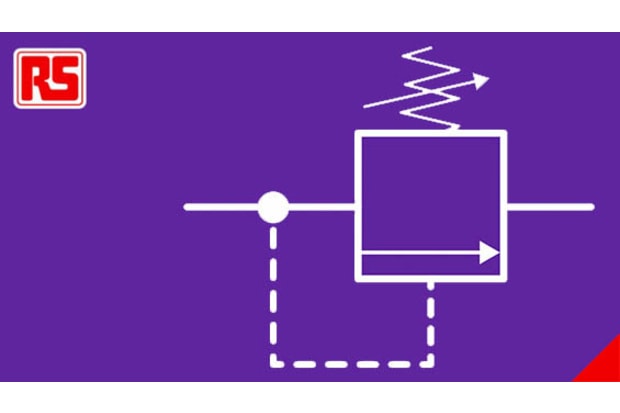
Pressure Relief Valve Symbol
This image shows the pressure relief valve symbol, as it is displayed in a system. This shows a simple, direct-operated PRV valve.
It is worth noting that alternative symbols are sometimes used to denote relief valves used in different systems or electrically-operated PRVs as opposed to hydraulic models.
What Does a Pressure Relief Valve Do?
Pressure relief valves are commonly found in a wide range of applications. They can be used in compressed air systems, such as pneumatics within industrial automation.
They are also an important component in high-pressure applications such as oil and gas, defence and nuclear, where industrial and process gases are stored and transported at high pressure and need to be regulated down to a safe working pressure before use.
If there is a risk to any individual or process from potential over-pressurisation, a pressure valve should always be used. Furthermore, it is good practice to automatically include them in any standard pneumatic system design.
How Does a Pressure Relief Valve Work?
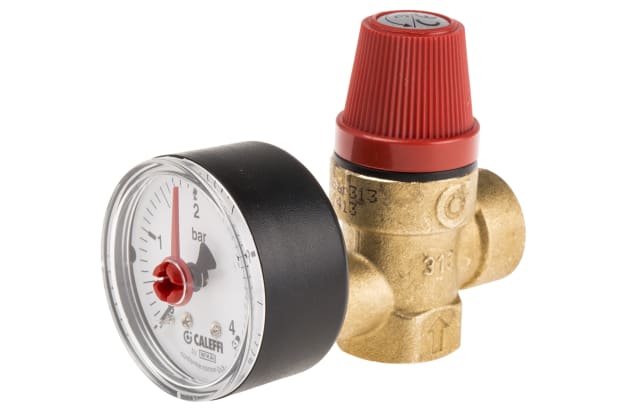
PLVs are used to safeguard compressed air systems against over-pressurisation. They achieve this through the release of surplus pressure.
The force generated by pressure acting against the seat of the valve opens it through spring tension. The manual action of rotating the control handle provides the ability to increase or decrease levels of tension within the spring. In turn, this adjusts the amount of pressure needed for the valve to open.
In the event that pressure rises higher than a pre-set level, the excess pressure can be eased via a spring-loaded mechanism. This will open as a result of the high pressure, in comparison to the defined level. When the excess has been relieved from the system, the pressure will drop to its former levels. This will close the relief valve again.
Pressure relief valves are designed to prevent a system over-pressurisation. The action of quickly exhausting air out of the vessel or tank makes them highly useful. As a result, they are a necessity for both safety reasons and ensuring the dependable running of air compression systems.
How to Fit a Pressure Relief Valve
PRVs are a key component in any hydraulic or pneumatic system. The importance of safety should never be overlooked, and relief valves provide a key defence to protect against damaged equipment as well as the safety of individuals and employees. Resultingly, pressure relief valves must be fitted and operated in the right way.
The following tips should provide some handy guidance to ensure your PRVs are fitted correctly and securely in any system:
- Pressure relief valves need to be mounted in an upright, vertical position
- Take care not to overtighten the valve as this could cause damage or leakage
- When fitting flanged relief valves, make sure the bolts are drawn down evenly
- Ensure the inlet piping does not have a smaller diameter than the valve as this could constrict the flow
- Ensure the outlet piping is larger than the size of the valve outlet to ensure flow is not restricted
- Support the outlet piping to prevent warping and leakage and ensure no excess strain will be placed on the piping in the event of thermal expansion
Boiler Pressure Relief Valves
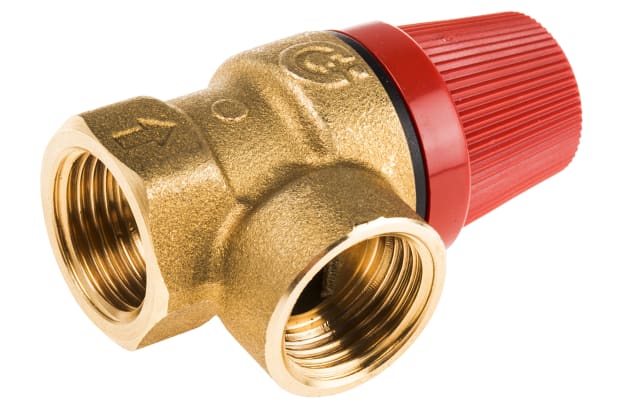
Pressure relief valves are used in boilers to control pressure levels and let out any excess that occurs in the event of over-pressure. Depending on the specific type and model of boiler, they can be located either externally or inside the boiler itself.
Regular boiler maintenance is essential for safety reasons and to ensure the boiler and all its constituent parts remain in good working order. As part of this maintenance, the pressure relief valve should be inspected. A failing PRV valve could cause leaks or further issues relating to pressure in the boiler system, so if in doubt, it is always recommended to get the problem addressed by a fully-qualified professional.
If the relief valve on a boiler does need replacing, a registered gas engineer will be able to complete the task. The process itself is relatively straightforward, but as it involves working with gas, any replacement or maintenance work should only be carried out by fully-trained and registered individuals.
In simple terms, the replacement process involves:
- Turning off the boiler and draining the system
- Once the pressure gauge reaches zero and it is safe to proceed, removing the old relief valve
- Fitting the new replacement valve into position
- Refilling the system and testing to confirm the new relief valve is functioning as expected
FAQs
What is the Difference Between a Pressure Relief Valve and a Pressure Reducing Valve?
In order to identify and explain the key differences between a pressure relief valve and a pressure reducing valve, how it works must first be understood. Pressure reducing valves simply use spring pressure against a diaphragm to open the valve. The outlet pressure rises and begins to approach the set level. The pressure beneath the diaphragm then starts to overcome spring pressure. As this increases, the stem of the valve is forced upwards and this closes the valve.
Therefore, a pressure relief valve will release extra pressure from the tank or system. Conversely, a pressure reducing valve will diminish the pressure in a pneumatic or hydraulic circuit. Reducing valves are planned to look for even the smallest pressure rises in fluid lines, and they do not permit pressure to increase beyond pre-set limits.
What Causes a Pressure Relief Valve to Open?
Pressure acts against the valve seat and the force generated by this action opens the valve against spring tension. Turning the control knob can increase or decrease the tension in the spring, therefore adjusting the amount of pressure needed to open the valve.
What is the Purpose of a Pressure Regulating Valve?
Pressure regulating valves can be used with either gas or liquid. Essentially, they control the pressure as measured against a pre-set value. These valves can be found in a wide range of applications and are available as either integrated devices or external components.
Pressure regulating valves are designed to operate continuously. This ensures that they can hold a fixed downstream pressure, regardless of the upstream pressure or any fluctuations which might occur.
Related Guides
Related links
- Pressure Relief Valves
- A Guide to Pressure Reducing Valves
- Pneumatic Pressure Relief Valves
- RS PRO 0.5bar Pressure Relief Valve With Compression 22 mm Connection
- Festo GRLO Pressure Relief Valve, GRLO-M5-B
- Festo GRO Pressure Relief Valve G 1/4, GRO-1/4
- Festo GRLO Pressure Relief Valve, GRLO-M5-PK-3-B
- Norgren V07 Pressure Relief Valve G 1/4, V07-200-NNLG
